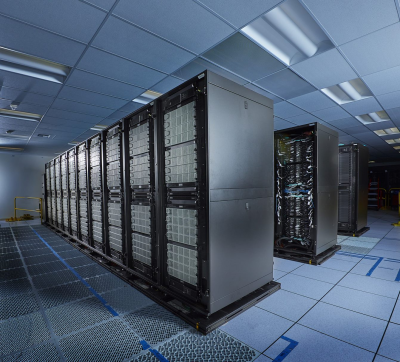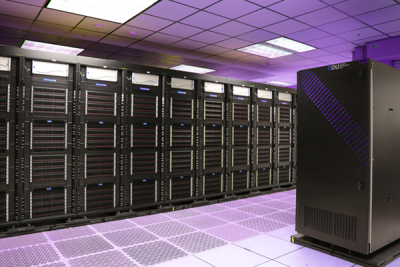The Commodity Technology Systems (CTSs) currently sited and in use at LLNL were planned, researched, developed, procured, tested, integrated, and deployed to unify computing efforts across the National Nuclear Security Administration (NNSA) defense complex. These systems leverage industry advances and open-source software to build, field, and integrate high-performance clusters of various sizes into production service. The Advanced Simulation and Computing (ASC) programmatic objective is to substantially reduce the total cost of ownership of these CTSs relative to Linux cluster deployments today. Ultimately, the goal is to make these systems as robust and useful as quickly as possible to support ASC's scientific simulation capacity workloads.
NNSA's latest capacity computing systems, collectively called CTS-2 systems, are the fourth joint procurement under the ASC program. They will replace the current CTS-1 machines, which were sourced by the 2015 CTS-1 contract and are now nearing retirement. LLNL’s first CTS-2 machines—Mutt, RZWhippet, and Poodle—arrived in mid-2022. Deployment of additional machines, including Dane, RZHound, and Bengal is ongoing, with additional future CTS-2 system deployments through 2025.
The CTS-2 contract is funded primarily by NNSA’s ASC program and will provide at least $70 million for more than 70 petaflops of computing capacity to the NNSA Tri-Labs (LLNL, LANL, and SNL). These systems will be deployed at the Tri-Labs in building blocks called “scalable units” (SUs), with each SU representing approximately 1.4 petaflops of computing power. The CTS-2 contract will also be available to other defense and institutional computing programs.
The CTS-2 SU hardware will couple with the LLNL-led Tri-Laboratory Operating System Software (TOSS) and provide the foundation for the common ASC user simulation environment. The CTS-2 SUs will incorporate next-generation Intel Xeon Scalable processors (code-named “Sapphire Rapids”) and DDR5 memory with Dell PowerEdge C6620 and R760 servers. Each laboratory will configure the SUs into more powerful multiple-SU systems according to specific mission needs. The CPUs will utilize CoolIT direct-to-chip liquid cooling technology. Dell servers that incorporate graphical processing units (GPUs) and advanced HBM memory will also be available under the CTS-2 contract.
This Tri-Lab procurement model reduces costs through economies of scale based on standardized hardware and software environments at the three labs. Scientists are now using the CTS1- and CTS-2 computers for programmatic simulations.






